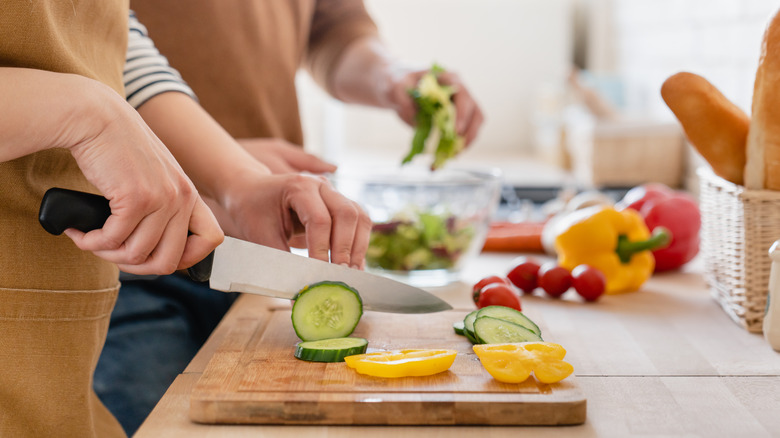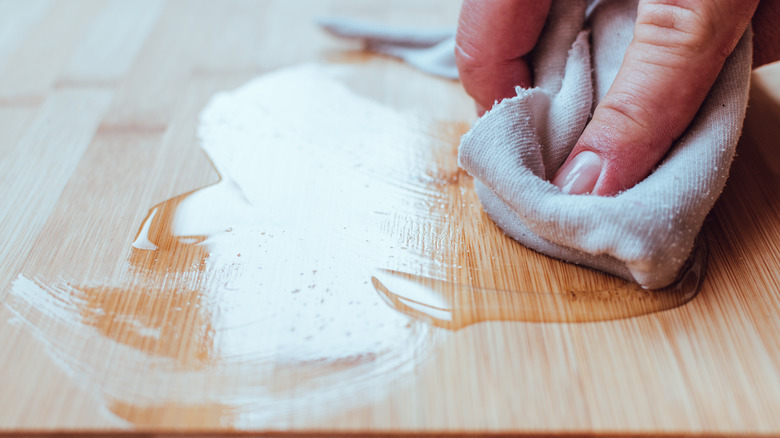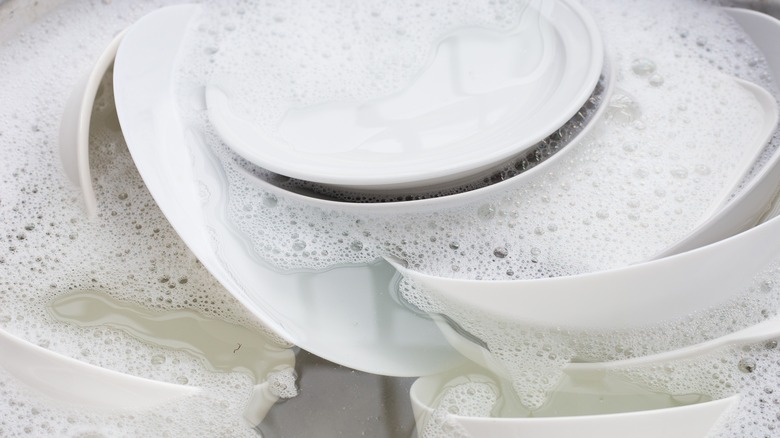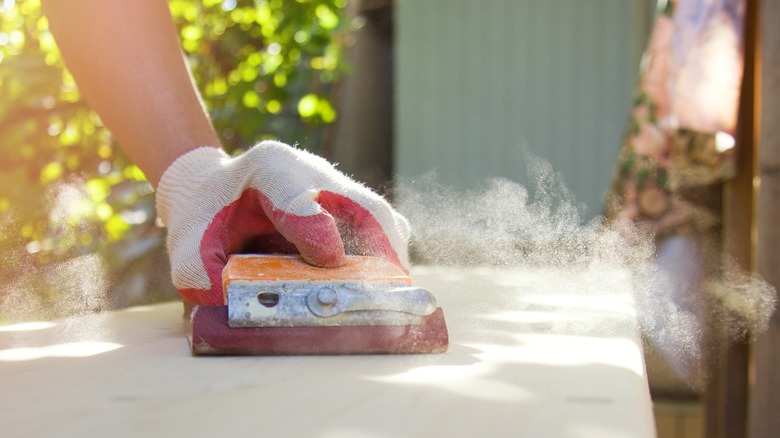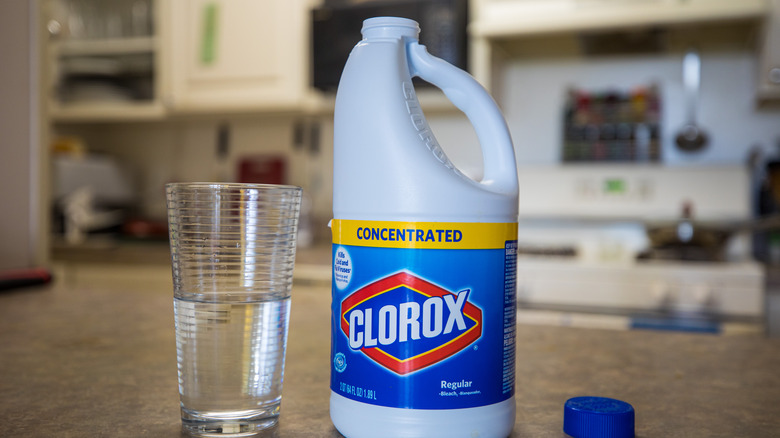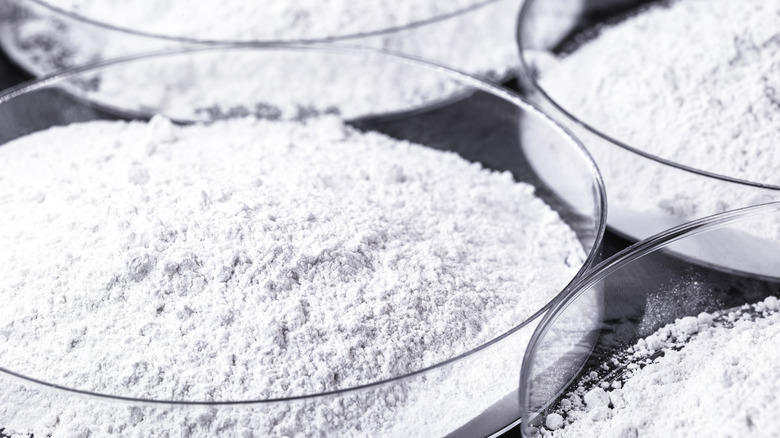How To Make Your Cutting Boards Last Longer And Look Newer
Cutting boards are an essential part of the kitchen. If it weren't for these handy boards, our countertops would be full of scratches and other damage, which is why it's important to take good care of them. New cutting boards can be quite pricey, so you probably want to do everything you can to extend the life of the one you have. According to Kitchen Seer, wooden cutting boards can withstand constant use for up to seven years when properly maintained. Plastic cutting boards, on the other hand, can survive for around one to five years.
So, how do you keep these kitchen essentials in great shape? It actually doesn't require much time or many resources, and it's quite simple. The key is to stay on top of maintenance and keep track of any minor issues that could unexpectedly turn into serious damage or even ruin your cutting board. Here are a few ways to make your boards last longer and stay looking like new the whole time.
Oil it up
If you have a wooden cutting board, you likely know they're prone to cracking, but did you know those cracks in your board are dangerous? According to MyRecipes, bacteria can grow in the cracks of your cutting board and live in its grooves even if it's been washed. In fact, the USDA recommends using two separate cutting boards (one for produce and one for meat) to prevent cross-contamination. If you only have one cutting board, you can use oil to prevent cracks from forming. Misen suggests an oiling regimen of once or twice per year to maintain quality and longevity.
Mineral and coconut oils are great options for this task, but stay away from cooking oils because they can spoil on your board, Hardwood Lumber Company explains. Coat your board in a light layer of oil and push it in with a paper towel. Wipe away any excess and let the board sit overnight so the oil can fully seep through.
Steer clear of soaking
Despite what you may think, soaking your wooden cutting board is not the best option for cleaning it. Wood is porous, so it soaks up water really well, which can lead to moisture buildup inside the cutting board. When this happens, your cutting board becomes more prone to cracking and warping. A lengthy soak can even lead to a rotting board, according to Food and Wine.
On that same token, keep your wooden cutting board far away from the dishwasher. This is one of the fastest ways to destroy it. Dishwashers use too much water, which causes over-saturation, and too much heat during the drying cycle, which will ultimately dry your board out. As we learned earlier, drying leads to cracking, followed by harmful bacteria. Plastic cutting boards, on the other hand, are totally dishwasher-safe. Plastic is not porous like wood, meaning it doesn't absorb any water. Remember to run the dishwasher on hot so it disinfects the plastic board as well.
Sanding
You may be surprised to learn that you can actually sand your cutting board to make it look brand new. Cutting boards are prone to scratches and dents from a ton of usage, so to give yours a little freshening up, Smoker Grill Girl suggests sanding it. Now, it's important to note that you should only sand wooden or plastic boards; don't try this on glass or bamboo. By sanding your board, you're ridding it of all those ugly scratches, and giving it a new, smoother surface.
You can sand your plastic or wooden cutting board with a battery-powered sander. However, before you start sanding, you should always prep your board using steel wool to remove any micro pieces of plastic on the board, according to Instructables Living. Once the board is prepped and ready to go, start with a 25 grit sandpaper to successfully remove its top later. Eventually, you'll want to finish with 80 grit.
Bleach
As we mentioned earlier, cutting boards need to be thoroughly cleaned between uses to avoid contamination and the potential spread of diseases. Anytime you use your cutting board to cut raw meat, poultry, or seafood, it's absolutely crucial to clean and disinfect your board, Eat Right states. Simply using bleach can get this done in no time. Not only will bleach thoroughly clean your cutting board and keep it looking new, but it will ensure your board remains germ-free and safe to use.
To make your bleach solution, mix 1 tablespoon of liquid chlorine bleach (preferably unscented) with a gallon of water. Saturate the cutting board with the solution and let it sit for a few minutes to fully penetrate the cutting board's surface. Rinse the bleach solution off with water before letting your board dry. Either air drying or using paper towels to pat it dry will work. Make sure the bleach is completely rinsed off before using your cutting board again.
Baking soda and salt
While bleach quickly rids your plastic cutting board of those nasty stains, some people want to avoid harsh chemicals inside their home. If you fall into that category, here's a tip to clean a plastic cutting board without bleach. To begin, wash your board by hand with dish soap and water. Following that, submerge the board in a white vinegar solution and let it sit for five minutes. Alternatively, you can thoroughly coat it with a 3% hydrogen peroxide spray, but it will still need to sit for five minutes, Kitchn suggests.
After the five minutes are up, wash again with soap and water. For the final step, mix together equal parts salt, baking soda, and water. Since salt has a rough consistency, adding it in will boost the mixture's scouring capabilities, Airtasker explains. Use this to scrub your plastic cutting board until you've removed any lingering stains.
